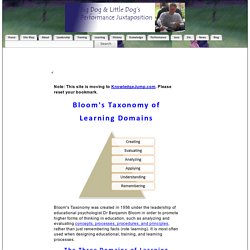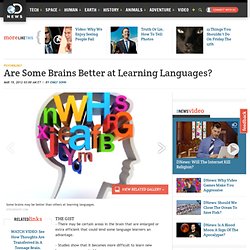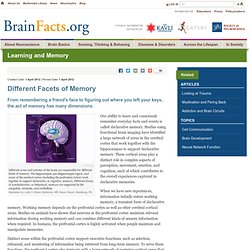

Especializados en preparar a las organizaciones para innovar. Inicio. Waldorf education. Waldorf education, also known as Steiner education, is based on the educational philosophy of Rudolf Steiner, the founder of anthroposophy.

Its pedagogy emphasizes the role of imagination in learning, striving to integrate holistically the intellectual, practical, and artistic development of pupils. The first Waldorf school opened in 1919 in Stuttgart, Germany. At present there are over a thousand independent Waldorf schools,[1] about 2,000 kindergartens[2] and 646 centers for special education,[3] located in 60 countries, constituting one of the largest independent school movements internationally.[4] There are also a number of Waldorf-based public schools,[5] charter schools and academies, and homeschooling[6] environments. In Continental Europe, Waldorf pedagogy has become a well-recognized theory of education that has influenced public schooling and many European Waldorf schools receive state funding. Hawthorne Valley Waldorf School, Ghent, NY Origins and history[edit] Science[edit] WeTransfer. Www.freewebs.com/agapemanian/Language Teaching/Discovering Successful Second Language.pdf.
Www.mjal.org/Journal/12.pdf. Lanzan el concurso de "Miss Bache Buenos Aires" - lanacion.com. Our emotional brain - All In The Mind. Lynne Malcolm: We’re getting all emotional today on All in the Mind—Lynne Malcolm with you.

My guest is a respected neuroscientist who got caught up in India in the 70s with a bunch of meditators. Later he went against the tide in his field at a time when emotions were not taken seriously by insisting that brain science be central to the study of feelings. And now, he says, our brain activity gives us each a unique emotional style. How children learn best - All In The Mind. Music Is A Must! by KBYU TV Eleven Ready To Learn. How to Draw a Dragon for Kids - Dragons For Kids. Cookie Consent We use cookies to analyse our traffic and give our users the best user experience.

We also provide information about the usage of our site to our advertising and analytics partners. See details Accept How to Draw a Dragon for Kids I hope you enjoyed the video version of this simple tutorial on "how to draw a dragon for kids". Step 1. Bloom's Taxonomy of Learning Domains. Note: This site is moving to KnowledgeJump.com.

Please reset your bookmark. Bloom's Taxonomy was created in 1956 under the leadership of educational psychologist Dr Benjamin Bloom in order to promote higher forms of thinking in education, such as analyzing and evaluating concepts, processes, procedures, and principles, rather than just remembering facts (rote learning). It is most often used when designing educational, training, and learning processes. The Three Domains of Learning The committee identified three domains of educational activities or learning (Bloom, et al. 1956): Cognitive: mental skills (knowledge) Affective: growth in feelings or emotional areas (attitude or self) Psychomotor: manual or physical skills (skills)
Are Some Brains Better at Learning Languages? - There may be certain areas in the brain that are enlarged or extra efficient that could lend some language learners an advantage. - Studies show that it becomes more difficult to learn new languages as you get older. - Neuroscientists are still trying to understand all the various brain regions involved in learning language.

In his spare time, an otherwise ordinary 16-year old boy from New York taught himself Hebrew, Arabic, Russian, Swahili, and a dozen other languages, the New York Times reported last week. Www.brainfacts.org/about-neuroscience/brain-facts-book/~/media/Brainfacts/Article Multimedia/About Neuroscience/Brain Facts book.ashx. Different Facets of Memory. Our ability to learn and consciously remember everyday facts and events is called declarative memory.

Studies using functional brain imaging have identified a large network of areas in the cerebral cortex that work together with the hippocampus to support declarative memory. These cortical areas play a distinct role in complex aspects of perception, movement, emotion, and cognition, each of which contributes to the overall experiences captured in declarative memories. When we have new experiences, information initially enters working memory, a transient form of declarative memory. Working memory depends on the prefrontal cortex as well as other cerebral cortical areas. Studies on animals have shown that neurons in the prefrontal cortex maintain relevant information during working memory and can combine different kinds of sensory information when required.
Semantic memory is a form of declarative knowledge that includes general facts and data. Calpe y Abyla - Revista de Educación y Neurociencias.
Www.faroshsjd.net/adjuntos/2232.1-Faros 6 Cast.pdf. The Secret Life of the Brain : History of the Brain. Los Enigmas del Cerebro « Facundo Manes. THE BRAIN FROM TOP TO BOTTOM. Enhancing Education: The 5 E's. The 5 E's is an instructional model based on the constructivist approach to learning, which says that learners build or construct new ideas on top of their old ideas.

The 5 E's can be used with students of all ages, including adults. Each of the 5 E's describes a phase of learning, and each phase begins with the letter "E": Engage, Explore, Explain, Elaborate, and Evaluate. The 5 E's allows students and teachers to experience common activities, to use and build on prior knowledge and experience, to construct meaning, and to continually assess their understanding of a concept. Engage: This phase of the 5 E's starts the process. An "engage" activity should do the following: Make connections between past and present learning experiences Anticipate activities and focus students' thinking on the learning outcomes of current activities.